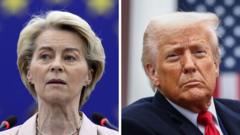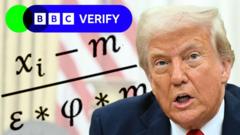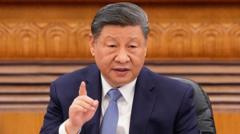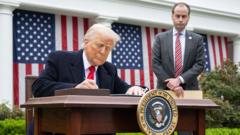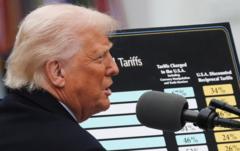**As tariff rates surge, experts warn of potential fallout on the US economy and global trade dynamics.**
**Trump's Bold Tariff Strategy: A New Era in Global Trade?**
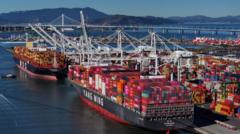
**Trump's Bold Tariff Strategy: A New Era in Global Trade?**
**Former President's Latest Import Tax Plans Signal Major Shift in Commerce**
In a striking shift from longstanding free trade policies, former President Donald Trump has unveiled a radical tariff plan aimed at safeguarding American industries and raising revenue. Announcing his proposal in the iconic White House Rose Garden, Trump declared, “It’s our declaration of economic independence,” as he described a 10% baseline tariff on all imports, beginning April 5. He singled out nations perceived as "worst offenders," including China and countries in the European Union, claiming that these nations have exploited the US through unfair trade practices for decades.
The proposed tariffs mark a significant departure from decades of bipartisan support for global trade, with analysts warning this could lead to increased consumer prices and hinder economic growth domestically and internationally. Trump emphasized a commitment to the American workforce, stating that these tariffs would rectify trade imbalances and press other nations to adhere to fairer practices.
Under the new plan, countries like the UK will incur a 10% tariff, while China will see an additional 34% on top of existing levies, pushing the total rate to a staggering 54%. Japan and India will also face substantial increases at 24% and 26%, respectively. Strikingly, the lesser-known nations like Lesotho, Vietnam, and Cambodia will receive some of the steepest penalties at 50% and 49%.
Trump’s administration aims to address currency manipulation and VAT disparities with this new tariff structure on over 100 countries, impacting millions of products—from clothing to electronics. Economists like Gustavo Flores-Macias have labeled the proposed changes as a "dramatic transformation" in the global trade framework, which the US has historically led since the end of World War II.
In immediate response to the announcement, US stock markets reacted negatively, with significant declines for firms heavily linked to international supply chains, like Apple and Amazon, signaling uncertainty about the future of US trade relations. Stakeholders across sectors are poised for a consequential shift in how global trade operates in the coming years.
The proposed tariffs mark a significant departure from decades of bipartisan support for global trade, with analysts warning this could lead to increased consumer prices and hinder economic growth domestically and internationally. Trump emphasized a commitment to the American workforce, stating that these tariffs would rectify trade imbalances and press other nations to adhere to fairer practices.
Under the new plan, countries like the UK will incur a 10% tariff, while China will see an additional 34% on top of existing levies, pushing the total rate to a staggering 54%. Japan and India will also face substantial increases at 24% and 26%, respectively. Strikingly, the lesser-known nations like Lesotho, Vietnam, and Cambodia will receive some of the steepest penalties at 50% and 49%.
Trump’s administration aims to address currency manipulation and VAT disparities with this new tariff structure on over 100 countries, impacting millions of products—from clothing to electronics. Economists like Gustavo Flores-Macias have labeled the proposed changes as a "dramatic transformation" in the global trade framework, which the US has historically led since the end of World War II.
In immediate response to the announcement, US stock markets reacted negatively, with significant declines for firms heavily linked to international supply chains, like Apple and Amazon, signaling uncertainty about the future of US trade relations. Stakeholders across sectors are poised for a consequential shift in how global trade operates in the coming years.

